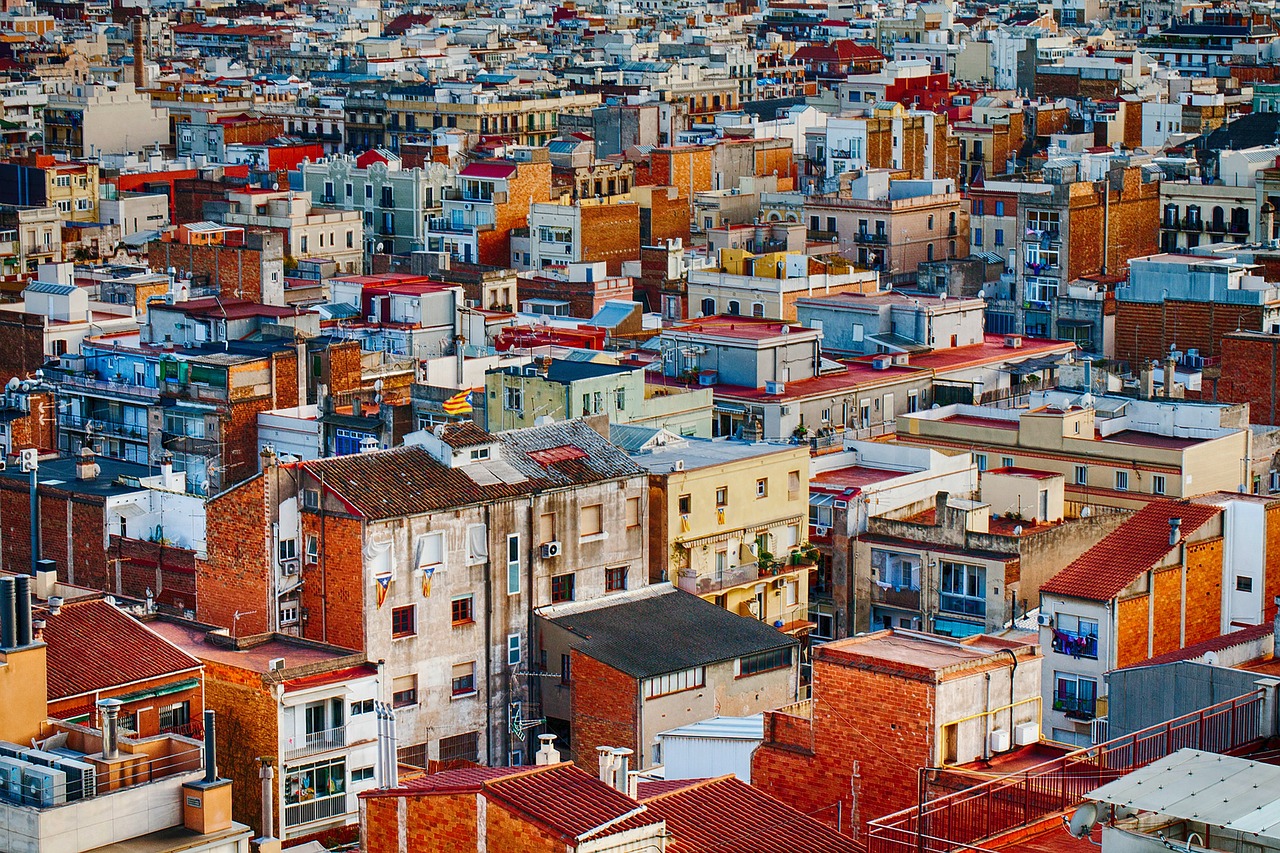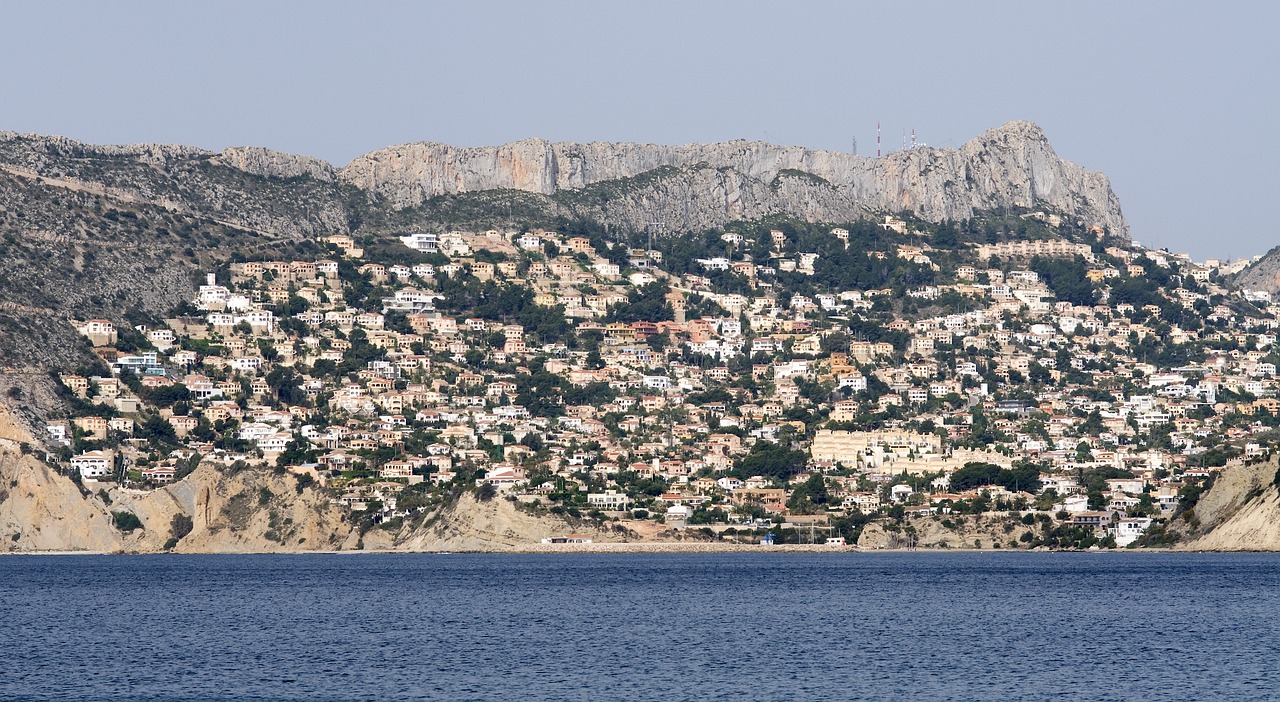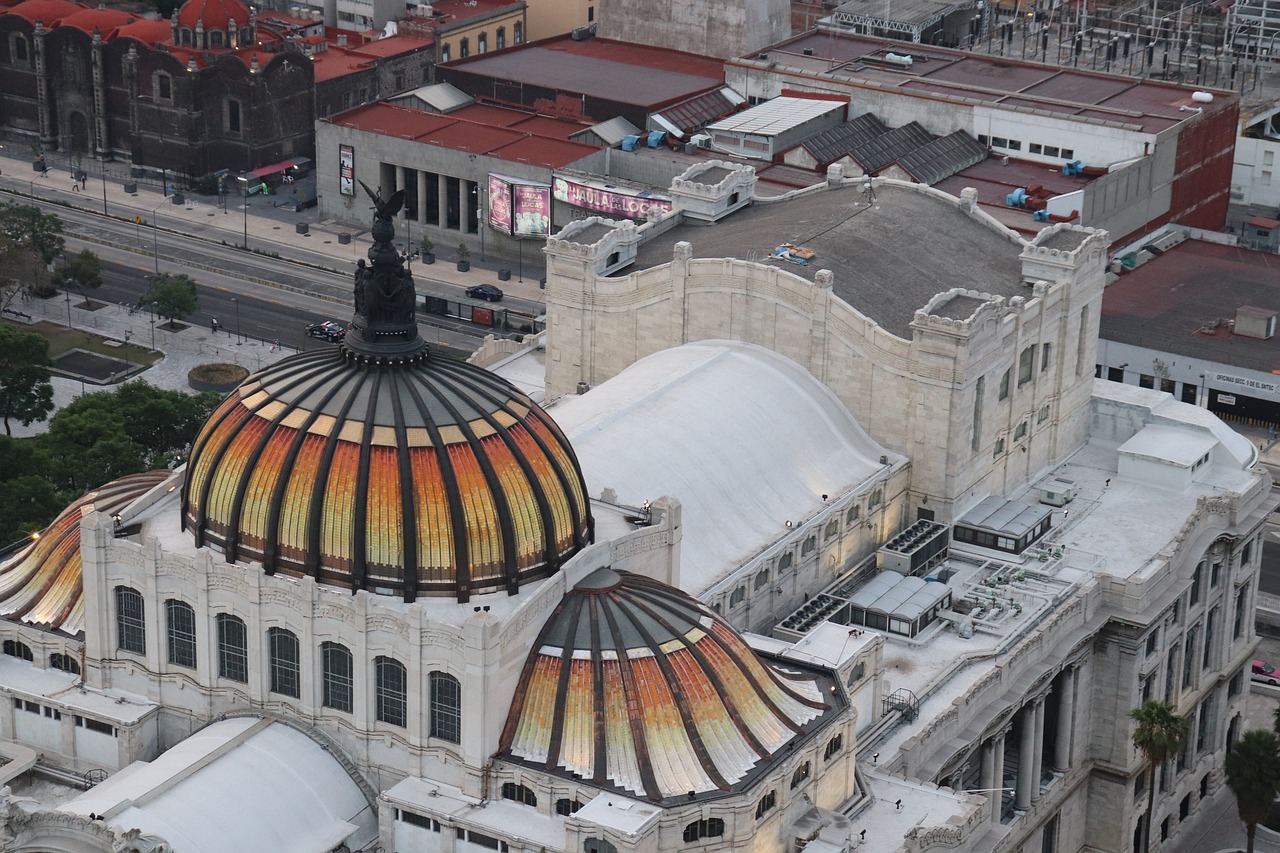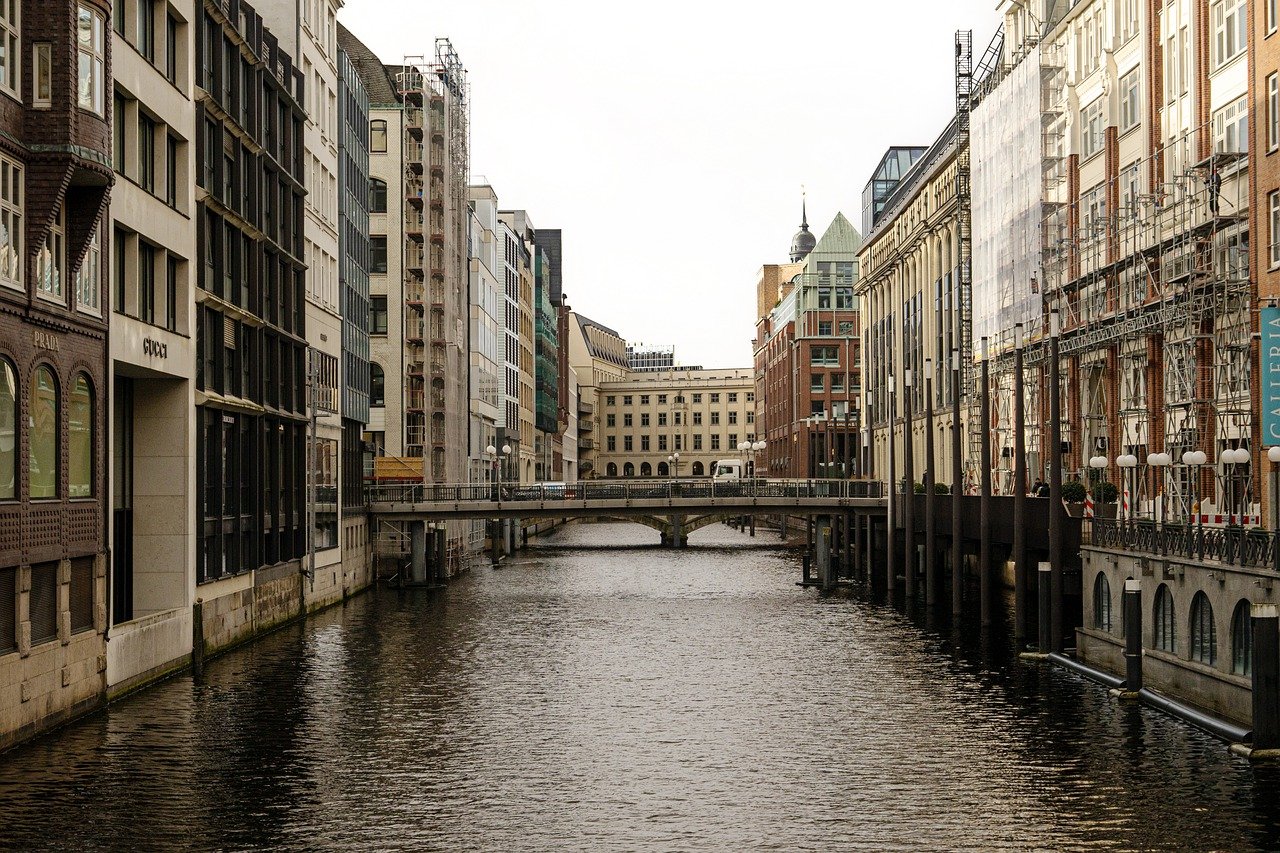The Effects of Urbanization on Cultural Heritage Sites
Urbanization has a profound impact on cultural heritage sites around the world, influencing their preservation, accessibility, and sustainability. As cities expand and populations grow, the historical significance of these sites faces various challenges that threaten their authenticity and cultural value.

Loss of Authenticity
When urbanization sweeps through historical areas, the authenticity of cultural heritage sites often finds itself at risk, standing in the path of progress. The rapid pace of urban development can bring about irreversible changes, leading to the destruction or alteration of centuries-old structures and landscapes that hold significant historical value. Imagine a delicate tapestry unraveling thread by thread, each piece of history lost in the whirlwind of modernization.
As bulldozers pave the way for skyscrapers and highways, the integrity of these sites is compromised, leaving behind a mere shadow of their former selves. The very essence that once made these places unique and irreplaceable is slowly eroded, fading into the background of urban sprawl. It's like watching a masterpiece being painted over, layer by layer, until only a faint outline remains.
Preservation efforts often struggle to keep up with the relentless march of urban expansion, caught in a tug-of-war between progress and heritage. The clash between the old and the new creates a battleground where the past fights for survival against the tide of modernity. It's a race against time, with each passing day bringing these sites closer to the brink of irreparable loss.

Increased Pollution and Environmental Degradation
Urbanization has a profound impact on cultural heritage sites, with one of the significant consequences being the increased pollution and environmental degradation that often accompanies rapid urban development. As cities expand and populations grow, the influx of people and vehicles bring about heightened pollution levels, posing serious risks to the physical integrity and aesthetic value of these historical sites.
The environmental degradation resulting from urbanization can manifest in various forms, such as air and water pollution, noise pollution, and the depletion of natural resources. These factors not only affect the surrounding ecosystem but also directly impact the preservation of cultural heritage sites, leading to deterioration and damage over time.
Moreover, the accumulation of waste and pollutants from urban activities can contaminate the soil and water sources near heritage sites, further compromising their structural stability and overall condition. The presence of pollutants can accelerate the decay of historical buildings, monuments, and artifacts, diminishing their authenticity and cultural significance.
To address the challenges posed by increased pollution and environmental degradation, sustainable urban planning strategies are essential. Implementing measures to reduce emissions, promote green spaces, and establish environmentally friendly infrastructure can help mitigate the negative impact of urbanization on cultural heritage sites.

Challenges in Conservation and Restoration
Conserving and restoring cultural heritage sites in the face of rapid urbanization presents a myriad of challenges that require innovative solutions and dedicated efforts. One of the primary obstacles is the lack of funding and resources for comprehensive conservation projects. As urban areas expand, allocating sufficient financial support for the preservation of historical sites becomes increasingly difficult, leading to delays or incomplete restoration efforts.
Moreover, technological limitations can impede the conservation process, especially for sites with intricate architectural details or fragile materials. Traditional restoration methods may not always be suitable for addressing modern urban pressures, necessitating the adoption of advanced technologies and techniques to ensure the longevity of cultural heritage sites.
Another significant challenge is balancing conservation with development needs. Urban growth often demands the repurposing of historical buildings or landscapes for contemporary use, raising questions about how to preserve the authenticity of heritage sites while accommodating the evolving needs of urban populations. Striking a harmonious balance between conservation efforts and urban development goals requires careful planning and collaboration between various stakeholders.
Additionally, political and social complexities can complicate conservation and restoration initiatives. Conflicting interests among government bodies, local communities, and private developers may hinder progress in safeguarding cultural heritage sites from the impacts of urbanization. Building consensus and fostering dialogue among different parties is essential to navigate these complexities and ensure the sustainable preservation of historical landmarks.
Furthermore, climate change poses a growing threat to the conservation of cultural heritage sites in urban areas. Extreme weather events, rising sea levels, and other environmental challenges can accelerate the deterioration of historical structures and artifacts, requiring adaptive strategies to mitigate the impact of climate-related risks on heritage preservation.
In addressing the challenges of conservation and restoration in urban settings, a holistic approach that combines heritage management practices, community engagement, and interdisciplinary collaboration is essential. By integrating sustainable conservation methods with urban planning initiatives, it is possible to safeguard cultural heritage sites for future generations while promoting the cultural richness and diversity of urban landscapes.

Threats from Infrastructure Development
Exploring how rapid urbanization impacts the preservation, accessibility, and sustainability of cultural heritage sites worldwide, and the strategies employed to mitigate negative consequences.
Urban development often leads to the destruction or alteration of historical structures and landscapes, diminishing the authenticity and integrity of cultural heritage sites.
The influx of people and vehicles in urban areas can result in heightened pollution levels, posing risks to the physical integrity and aesthetic value of heritage sites.
Urban expansion can present obstacles in the conservation and restoration efforts of cultural heritage sites, requiring innovative approaches to protect their historical significance.
The construction of infrastructure projects in urban areas may encroach upon or disrupt cultural heritage sites, jeopardizing their physical existence and cultural value.
Urbanization often leads to an increase in tourism around heritage sites, placing strain on their resources, infrastructure, and ability to maintain authenticity and cultural significance.
Urban growth can displace communities living near heritage sites, affecting their cultural practices, traditions, and connection to the historical environment.
Navigating complex legal frameworks and regulations in urban settings can pose challenges to the protection and preservation of cultural heritage sites against urban development pressures.
Exploring urban planning approaches that integrate the preservation of cultural heritage sites within sustainable development frameworks to ensure their long-term protection and accessibility.

Rising Tourism Pressures
As urbanization continues to expand, one of the significant impacts on cultural heritage sites is the rising pressures from tourism. The influx of visitors to these sites brings both opportunities and challenges, putting strain on their resources and infrastructure while also enhancing their visibility on a global scale.
With the growth of urban areas, heritage sites often experience a surge in tourist numbers, leading to overcrowding and increased wear and tear on the historical structures. The delicate balance between preserving the authenticity of these sites and catering to the demands of tourism can be a delicate one to maintain.
Moreover, the commercialization of heritage sites to cater to tourists can sometimes compromise their cultural significance. The need to generate revenue from tourism activities may result in the introduction of modern amenities and services that clash with the historical context of the site, diluting its authenticity.
Additionally, the environmental impact of tourism on cultural heritage sites cannot be overlooked. Increased foot traffic, transportation emissions, and waste generation can contribute to pollution and environmental degradation in and around these sites, affecting their long-term sustainability.
To address the rising tourism pressures on cultural heritage sites, sustainable tourism practices and visitor management strategies are essential. Implementing carrying capacity limits, promoting responsible tourism behavior, and investing in site maintenance and conservation efforts can help mitigate the negative impacts of tourism while ensuring the preservation of these invaluable cultural assets for future generations.

Community Displacement and Social Impact
Urban growth resulting from rapid urbanization often brings about significant consequences, such as community displacement and social impact on those living near cultural heritage sites. As cities expand and infrastructure projects take precedence, communities residing in proximity to these sites may face displacement, disrupting their established way of life and connection to their cultural roots.
This displacement can have far-reaching social impacts, affecting the traditions, practices, and identity of the communities involved. The forced relocation of residents can lead to a loss of community cohesion, breaking down social structures that have been in place for generations. Additionally, the disconnection from their historical environment can result in a sense of loss and disorientation among the affected individuals.
Furthermore, the social fabric of these communities may be strained as they are uprooted from familiar surroundings and forced to adapt to new living conditions. This adjustment process can be challenging, particularly for vulnerable populations who may lack the resources or support systems to navigate the changes effectively.
In the face of community displacement due to urbanization, it becomes crucial for urban planners and policymakers to consider the social impact on residents and develop strategies that prioritize the well-being and cultural preservation of affected communities. By engaging with local stakeholders, understanding their needs, and involving them in the decision-making processes, it is possible to mitigate the negative social consequences of urban expansion on cultural heritage sites.

Legal and Regulatory Challenges
Urbanization presents a myriad of legal and regulatory challenges when it comes to the protection and preservation of cultural heritage sites. The complexities of navigating legal frameworks in urban settings can often hinder efforts to safeguard these sites against the pressures of development and urban growth. From zoning regulations to heritage protection laws, ensuring the legal protection of cultural heritage sites requires a comprehensive understanding of local, national, and international laws.
One of the primary legal challenges faced in urban areas is the conflict between heritage conservation laws and the demands of urban development projects. Balancing the need for infrastructure development with the preservation of historical sites can lead to legal disputes and regulatory hurdles. Additionally, the lack of clear guidelines or enforcement mechanisms can leave cultural heritage sites vulnerable to encroachment and destruction.
In some cases, heritage protection laws may be inadequate or outdated, failing to address the evolving threats posed by rapid urbanization. This gap in legal frameworks can leave heritage sites exposed to risks such as unauthorized construction, vandalism, or neglect. Strengthening and updating existing laws to adapt to the changing urban landscape is essential to ensure the long-term preservation of cultural heritage.
Moreover, the jurisdictional complexities involved in protecting cultural heritage sites located in urban areas can further complicate legal and regulatory efforts. Coordinating between various governmental bodies, heritage organizations, and community stakeholders to enforce protective measures requires a collaborative and multi-faceted approach. Establishing clear lines of responsibility and accountability is crucial in overcoming legal challenges and ensuring the sustainable conservation of heritage sites.
Addressing legal and regulatory challenges in urban settings demands a holistic approach that considers the unique characteristics and vulnerabilities of cultural heritage sites. By fostering partnerships between government agencies, conservation experts, and local communities, it is possible to develop effective strategies that uphold the legal protection and integrity of these invaluable assets amidst the rapid transformations of urban environments.

Urban Planning Strategies for Heritage Conservation
Exploring how rapid urbanization impacts the preservation, accessibility, and sustainability of cultural heritage sites worldwide, and the strategies employed to mitigate negative consequences.
Urban planning plays a crucial role in safeguarding cultural heritage sites amidst the rapid urbanization wave. By integrating heritage conservation into urban development frameworks, cities can ensure the long-term protection and accessibility of these invaluable assets. One effective strategy is the establishment of heritage zones or districts within urban areas, where specific regulations and guidelines govern development activities to preserve the historical fabric of the site.
Moreover, collaborative efforts between urban planners, conservationists, and local communities are essential in devising sustainable strategies that balance modern urban needs with the preservation of cultural heritage. This collaborative approach can lead to the implementation of adaptive reuse projects, where historic buildings are repurposed for contemporary functions while retaining their architectural and cultural significance.
Furthermore, incorporating heritage conservation into urban planning policies can involve the creation of buffer zones around cultural sites to protect them from encroaching development. These buffer zones act as protective barriers, limiting the impact of urban expansion on the integrity and authenticity of the heritage site.
Additionally, leveraging technology such as Geographic Information Systems (GIS) and digital mapping tools can aid urban planners in identifying and mapping cultural heritage sites, enabling informed decision-making regarding their preservation within the urban landscape. By utilizing these tools, cities can better plan for the integration of heritage conservation measures into their overall urban development strategies.
In conclusion, urban planning strategies for heritage conservation are vital in ensuring the sustainable preservation of cultural heritage sites amidst the challenges posed by rapid urbanization. By adopting a proactive and collaborative approach, cities can safeguard these irreplaceable assets for future generations to appreciate and cherish.
Q: How can urban planning help protect cultural heritage sites?
A: Urban planning can establish regulations, heritage zones, and buffer areas to safeguard heritage sites from the negative impacts of urban development.
Q: Why is community involvement important in heritage conservation?
A: Community participation fosters a sense of ownership and responsibility towards heritage sites, ensuring their long-term preservation and sustainability.
Q: What role does technology play in heritage conservation planning?
A: Technology such as GIS and digital mapping tools assist in identifying, mapping, and monitoring cultural heritage sites, aiding in informed decision-making for their protection and integration into urban landscapes.
Frequently Asked Questions
- What are the main challenges cultural heritage sites face due to urbanization?
Cultural heritage sites face challenges such as loss of authenticity, increased pollution, difficulties in conservation and restoration, threats from infrastructure development, rising tourism pressures, community displacement, and legal and regulatory challenges as a result of urbanization.
- How does urbanization impact the preservation of cultural heritage sites?
Urbanization impacts the preservation of cultural heritage sites by often leading to the destruction or alteration of historical structures, increased pollution levels, obstacles in conservation efforts, encroachment from infrastructure development, tourism pressures, community displacement, and legal complexities.
- What strategies can be implemented to protect cultural heritage sites from the negative effects of urbanization?
Strategies such as integrating heritage conservation into urban planning, promoting sustainable development practices, engaging local communities in preservation efforts, implementing strict regulations, fostering responsible tourism, and employing innovative conservation techniques can help protect cultural heritage sites from the negative impacts of urbanization.



















